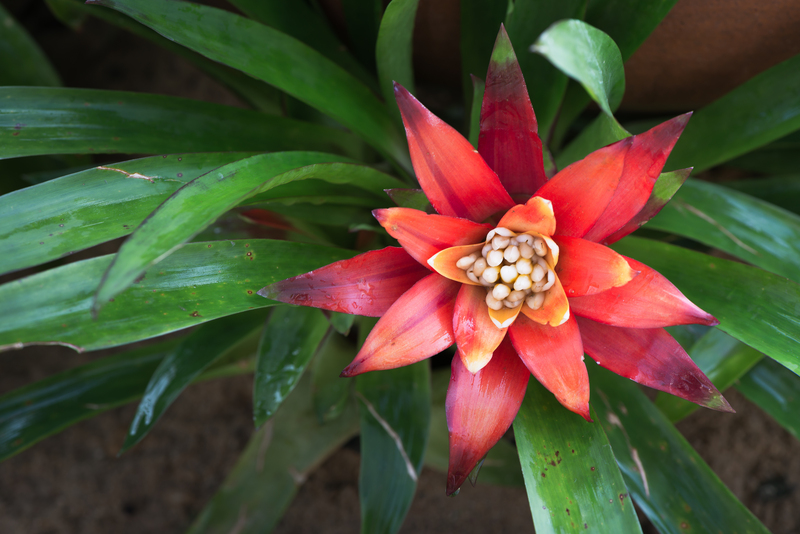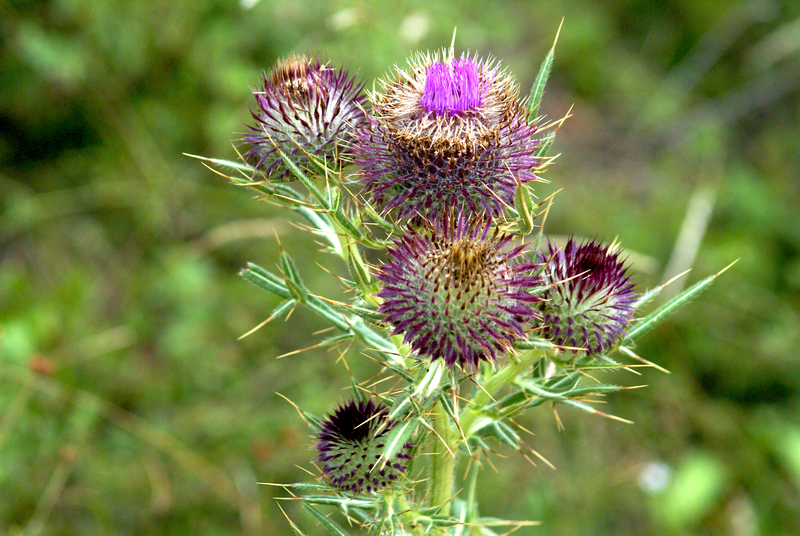How to Build a Thriving and Inviting Garden for Children
Posted on 26/08/2025
How to Build a Thriving and Inviting Garden for Children
A vibrant and interactive garden for children can be an incredible space for learning, play, and growth. Not only does it offer a safe environment for kids to explore nature, but it also helps develop curiosity, responsibility, and an appreciation for the environment. Whether your goal is to foster imaginative play, encourage healthy eating, or simply enjoy quality time outdoors, creating a child-friendly garden is a rewarding family project. In this comprehensive guide, discover how to build a thriving and inviting garden that both you and your children will love.
Why Create a Garden for Children?
Children's gardens are much more than bursts of color in the backyard; they're living playgrounds that promote development, enhance well-being, and nurture creativity. Gardening with children introduces them to the cycles of nature, the importance of biodiversity, and the joys of stewardship.
- Physical Activity: Digging, planting, watering, and harvesting strengthen young bodies and encourage movement.
- Mental Growth: Understanding how plants grow fosters patience, curiosity, and problem-solving skills.
- Emotional Well-being: Tending to a living creature brings joy, a sense of responsibility, and accomplishment.
- Nutrition: Homegrown vegetables encourage healthier eating habits.
"Children are made readers on the laps of their parents, but they become explorers in the gardens they grow."

Planning Your Child-Friendly Garden
Laying the groundwork for a truly thriving and inviting children's garden begins with smart planning. The secret is to blend practicality with charm, ensuring safety, accessibility, and sensory-rich experiences.
1. Pick the Perfect Spot
Most plants need at least six hours of sunlight, so choose a sunny area visible from your home for easy supervision. A flat, secure, and accessible location is ideal for little ones. If your yard is limited in space, think vertically with trellises, containers, or raised beds.
2. Safety First
- Avoid Toxic Plants: Research and remove any poisonous plants, such as foxglove, oleander, or certain mushrooms.
- Install Fencing: Use a low fence or garden edging to keep children within bounds while defining their special space.
- Secure Tools and Chemicals: Store sharp or hazardous items out of reach.
- Opt for Child-Safe Paths: Use smooth stones, bark chips, or non-slip pavers.
3. Create Zones for Exploration and Play
Divide the garden into distinct areas for various activities. Consider:
- Planting zone
- Digging pit or sand area
- Sensory space
- Quiet nook for reading or reflection
- Imaginative play feature (fairy garden, teepee, or willow den)
Essential Features of a Garden for Kids
Grow Easy, Fun, and Safe Plants
For a productive and inviting garden for children, select plants that are:
- Non-toxic and Safe: Always double-check safety in your region.
- Easy to Grow: Beans, sunflowers, peas, nasturtiums, radishes, and strawberries sprout quickly and are visually rewarding.
- Sensory Stimulating: Plants with interesting textures, scents, or colors, such as lamb's ear, mint, or snapdragons, delight the senses.
- Edible Choices: Leafy greens, cherry tomatoes, baby carrots, marigolds (edible flowers), and blueberries encourage healthy snacking.
Hands-On Gardening: Tools and Equipment
- Child-sized Tools: Purchase lightweight trowels, rakes, and watering cans for little hands.
- Gloves and Sun Protection: Remember hats and sunscreen for outdoor sessions.
- Mud Kitchen or Potting Table: Foster creativity and practical skills with a dedicated work area.
Designing an Inviting Garden for Young Explorers
Encourage Wildlife and Biodiversity
A thriving children's garden hums with life. Welcome butterflies, bees, birds, and frogs with pollinator-friendly flowers, bird feeders, and a small water feature like a birdbath or bug hotel. These elements spark curiosity and teach kids about ecosystems and environmental stewardship.
Incorporate Color, Shape, and Texture
- Plant in Patterns or Shapes: Swirl paths, spiral gardens, or a rainbow-themed patch add visual excitement.
- Use Vibrant Accessories: Painted rocks, pinwheels, wind chimes, and whimsical signs bring personality and charm.
- Mix Textures: Combine velvety leaves, smooth stones, crunching gravel, and soft grass.
Create Accessible and Inclusive Paths
Wide, even paths made of mulch, flat stones, or pavers ensure that every child--no matter their mobility--can easily explore the garden.
How to Engage Children in Gardening
Make It Personal
Let children personalize spaces with name plaques, fairy doors, or hand-painted stepping stones. Assign each child their own plot or container to instill pride and *responsibility*.
Teach Through Fun Activities
- Theme Gardens: Try a pizza garden (growing tomatoes, peppers, basil, oregano), a salsa garden, or a butterfly haven.
- Garden Journaling: Encourage kids to draw, write observations, or photograph their gardening experiences.
- Science Experiments: Sprout seeds in a jar, measure rainfall, or observe pollinator visits.
Celebrate Milestones
Host "harvest days," garden tea parties, or a flower show to recognize their successes and maintain enthusiasm.
Seasonal Care in Your Children's Garden
Spring
- Start seeds indoors or outside, depending on the climate.
- Prepare soil with compost and mulching.
- Plan and lay out new garden beds or containers.
Summer
- Regularly water and weed together.
- Stake tall plants (like sunflowers) so they don't topple.
- Teach children about beneficial bugs and gentle handling of insects.
Autumn
- Harvest remaining crops and collect seeds for next year.
- Compost garden waste together.
- Plant bulbs for spring flowers.
Winter
- Plan next season's garden and order seeds.
- Create DIY bird feeders with pinecones and peanut butter.
- Craft garden art and decorations indoors.
Troubleshooting Common Challenges
- Poor Soil: Use raised beds with quality topsoil or start a compost pile for enrichment.
- Pests and Wildlife: Introduce natural deterrents and teach children about garden-friendly critters.
- Lack of Time: Grow low-maintenance plants and use mulch to suppress weeds and retain moisture.
- Children's Waning Interest: Mix in fast-growing crops and keep activities varied and fun.
Integrate Learning and Creativity
Building a garden for children's learning means integrating open-ended activities and teachable moments into everyday care.
- Math: Measure growth, count seeds, and plot the garden on graph paper.
- Art: Leaf rubbings, flower pressing, and nature-inspired art sessions.
- Science: Bug hunts, composting, and rainwater collection.
- Literacy: Reading garden-themed books or labeling plant signs together.
Special Tips: Making the Garden Accessible for All Children
- Raised Beds: Ensure beds aren't too high for children to reach. 12-18 inches is ideal for most ages.
- Wide Paths: A minimum width of three feet is recommended to accommodate wheelbarrows and wheelchairs.
- Adaptive Tools: Look for ergonomic grips and lightweight designs.
- No-Step Entries: Ensure direct, step-free access to all garden areas.
Common Questions About Children's Gardens
What are the best vegetables to grow in a kid-friendly garden?
Quick and visually rewarding crops--such as radishes, lettuce, snap peas, carrots, cherry tomatoes, and pumpkins--are favorites. Add a few herbs like basil or mint for a sensory bonus.
How can I keep my child's interest in gardening alive?
Keep sessions brief and engaging. Vary activities, celebrate milestones, and let children make choices. Add elements like garden scavenger hunts or wildlife observation.
Is it safe to use compost in a children's garden?
Yes! Compost is safe if well-maintained and free of pet waste or thorny plant material. Involve children in composting and explain the transformation process.
How can I include younger children or toddlers?
Set up a dedicated digging or sand area, grow large-seeded plants for easy handling, and supervise them closely. Encourage sensory play with safe textures and scents.

Conclusion: Planting Memories That Last a Lifetime
A thriving and inviting garden for children is much more than a patch of soil--it's a living classroom, a haven for the imagination, and a nurturing ground for lifelong friendships with nature. By thoughtfully designing the space, selecting the right plants, and involving children in every step, you plant seeds of knowledge and joy that will flourish for years to come.
Whether you're starting with a single container or transforming an entire yard, the journey of gardening with children is full of learning, discovery, and fun. Get ready to get your hands dirty--and watch your children, your garden, and your memories grow.
Further Resources for Growing a Children's Garden
- Local Cooperative Extension: Offers advice and sometimes children's gardening workshops.
- Children's Gardening Books: "Roots, Shoots, Buckets & Boots" by Sharon Lovejoy; "Gardening Lab for Kids" by Renata Brown.
- Online Forums and Communities: Share tips and stories with other families passionate about child-friendly gardening.
Start your journey today and create a magical, nurturing, and thriving garden for children of all ages!

